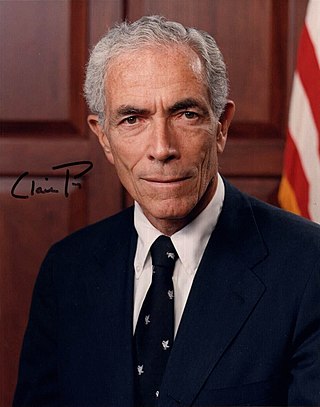
Claiborne de Borda Pell was an American politician and writer who served as a U.S. Senator from Rhode Island for six terms from 1961 to 1997. He was the sponsor of the 1972 bill that reformed the Basic Educational Opportunity Grant, which provides financial aid funding to American college students; the grant was given Pell's name in 1980 in honor of his work in education legislation.

The Mount Hope Bridge is a two-lane suspension bridge spanning the Mount Hope Bay in eastern Rhode Island at one of the narrowest gaps in Narragansett Bay. The bridge connects the Rhode Island towns of Portsmouth and Bristol and is part of Route 114. Its towers are 285 feet (87 m) tall, the length of the main span is 1,200 feet (370 m), and it offers 135 feet (41 m) of clearance over high water. The total length of the bridge is 6,130 feet (1,870 m).

The Claiborne Pell Bridge, commonly known as the Newport Bridge, is a suspension bridge operated by the Rhode Island Turnpike and Bridge Authority that spans the East Passage of the Narragansett Bay in Rhode Island. The bridge, part of RI 138, connects the city of Newport on Aquidneck Island and the Town of Jamestown on Conanicut Island, and is named for longtime Rhode Island U.S. senator Claiborne Pell who lived in Newport. The Pell Bridge is in turn connected to the mainland by the Jamestown Verrazzano Bridge.

Trinity Repertory Company is a non-profit regional theater located at 201 Washington Street in Providence, Rhode Island. The theater is a member of the League of Resident Theatres. Founded in 1963, the theater is "one of the most respected regional theatres in the country". Featuring the last longstanding Resident Acting Company in the U.S., Trinity Rep presents a balance of world premiere, contemporary, and classic works, including an annual production of A Christmas Carol, for an estimated annual audience of 110,000. In its 52-year history, the theater has produced nearly 67 world premieres, mounted national and international tours and, through its MFA program, trained hundreds of new actors and directors. Project Discovery, Trinity Rep's pioneering educational outreach program launched in 1966, annually introduces over 15,000 Rhode Island, Massachusetts, and Connecticut high school students to live theater through matinees as well as in-school residencies and workshops. As of 2016, Trinity Rep's educational programs serve students in around 60% of Rhode Island schools, and it has a 9 million USD annual budget.
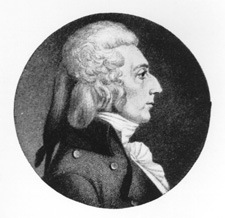
Christopher Grant Champlin was United States Representative, Senator and a slave trader from Rhode Island.

Shiloh Baptist Church is a historic former school building and former African American Baptist church in Newport, Rhode Island, United States.

The Redwood Library and Athenaeum is a subscription library, museum, rare book repository and research center founded in 1747, and located at 50 Bellevue Avenue in Newport, Rhode Island. The building, designed by Peter Harrison and completed in March 1750, was the first purposely built library in the United States, and the oldest neo-Classical building in the country. It has been in continuous use since its opening.
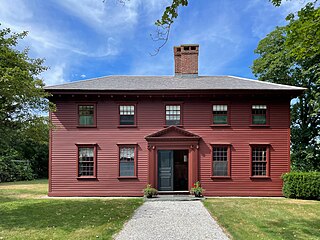
The Whitehall Museum House is the farmhouse modified by Dean George Berkeley, when he lived in the northern section of Newport, Rhode Island that comprises present-day Middletown in 1729–1731, while working to open his planned St Paul's College on Bermuda. It is also known as Berkeley House or Bishop George Berkeley House and was listed on the National Register of Historic Places in 1970.
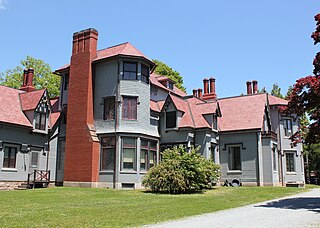
Kingscote is a Gothic Revival mansion and house museum at Bowery Street and Bellevue Avenue in Newport, Rhode Island, designed by Richard Upjohn and built in 1839. As one of the first summer "cottages" constructed in Newport, it is now a National Historic Landmark. It was remodeled and extended by George Champlin Mason and later by Stanford White. It was owned by the King family from 1864 until 1972, when it was given to the Preservation Society of Newport County.

The Old Colony House, also known as Old State House or Newport Colony House, is located at the east end of Washington Square in the city of Newport, Rhode Island, United States. It is a brick Georgian-style building completed in 1741, and was the meeting place for the colonial legislature. From independence in 1776 to the early 20th century, the state legislature alternated its sessions between here and the Rhode Island State House in Providence.
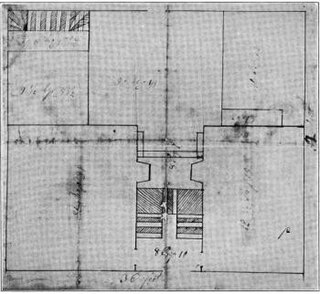
Richard Munday (c.1685-1739) was a prominent colonial American architect and builder in Newport, Rhode Island.
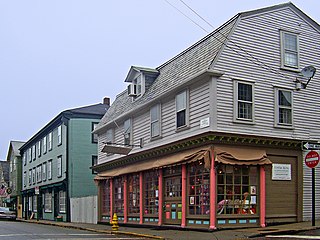
The Newport Historic District is a historic district that covers 250 acres in the center of Newport in the U.S. state of Rhode Island. It was designated a National Historic Landmark (NHL) in 1968 due to its extensive and well-preserved assortment of intact colonial buildings dating from the early and mid-18th century. Six of those buildings are themselves NHLs in their own right, including the city's oldest house and the former meeting place of the colonial and state legislatures. Newer and modern buildings coexist with the historic structures.
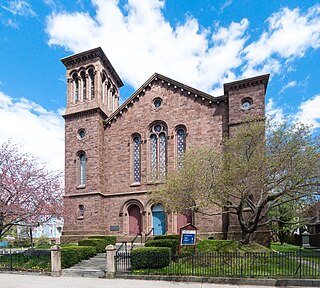
The United Congregational Church is a historic former church building in Newport, Rhode Island. The congregation was formerly affiliated with the United Church of Christ (UCC). Built in 1857, the church was designated a National Historic Landmark in 2012, in recognition for the unique interior decorations executed in 1880–81 by John La Farge.

The Newport Reading Room, founded in 1854, is a gentlemen's club located on Bellevue Avenue in Newport, Rhode Island, USA. Its primary building features an actual book reading room. The Spouting Rock Beach Association, which owns the famed Bailey's Beach, has been reported to own the building. However this claim, according to the club's leadership, is incorrect.

Salve Regina University is a private coeducational Roman Catholic university in Newport, Rhode Island, United States. It was founded in 1934 by the Sisters of Mercy and is accredited by the New England Commission of Higher Education. The university enrolls more than 2,800 undergraduate and graduate students annually.

George Champlin Mason Sr. (1820-1894) was an American architect who built a number of mansions in Newport, Rhode Island, during the Gilded Age. He helped to found the Newport Historical Society as well.
George Champlin Mason Jr. (1849–1924) was an American architect who is considered the first professional architectural preservationist in the United States.

George C. Mason & Son (1871–94) was an American architectural firm in Newport, Rhode Island.

Dudley Newton (1845-1907) was an American architect from Newport, Rhode Island.























